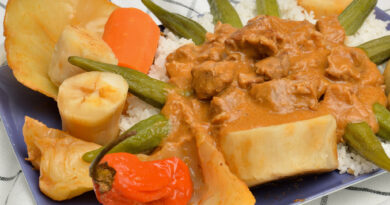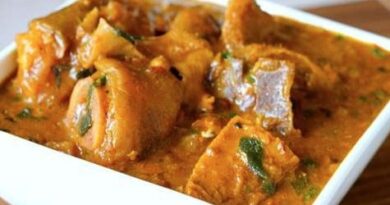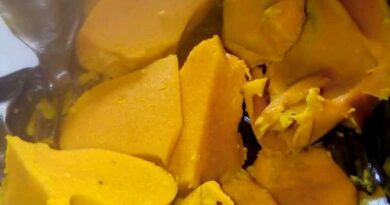Matoke
Unveiling the Culinary Treasure of East Africa: A Deep Dive into Matoke
Introduction: In the verdant landscapes of East Africa, amidst the rolling hills and fertile valleys, lies a culinary gem that has been cherished for generations: Matoke. This humble yet versatile dish, made from green bananas, is a staple in the diets of many East African countries, including Uganda, Tanzania, Kenya, and Rwanda. With its rich flavors, hearty texture, and cultural significance, Matoke represents the essence of East African cuisine. Join me on a flavorful journey as we explore the origins, ingredients, preparation methods, and cultural importance of this beloved dish.
Origins and Cultural Significance: Matoke has its origins in the Great Lakes region of East Africa, where bananas have been cultivated for centuries as a staple crop. The dish is particularly associated with Uganda, where it is considered a national dish and holds cultural and symbolic importance. Matoke is traditionally served during special occasions such as weddings, festivals, and family gatherings, where it symbolizes prosperity, abundance, and unity.
In addition to its cultural significance, Matoke is also celebrated for its nutritional value and versatility. Bananas are rich in essential nutrients such as potassium, fiber, and vitamins B6 and C, making them a valuable source of energy and nourishment. When cooked, Matoke takes on a soft and creamy texture, similar to that of potatoes, making it a satisfying and comforting dish that can be enjoyed on its own or paired with a variety of accompaniments.
Ingredients: The beauty of Matoke lies in its simplicity, with just a few basic ingredients coming together to create a dish that is both delicious and nutritious. The key components typically include:
- Green Bananas: Green or unripe bananas are the star ingredient of Matoke, providing a hearty and starchy base for the dish. The bananas are peeled and sliced before being cooked, either whole or in chunks.
- Onions: Onions are finely chopped and sautéed in oil or butter to create a flavorful base for the dish.
- Tomatoes: Ripe tomatoes are diced and added to the dish, providing sweetness, acidity, and vibrant color.
- Garlic and Ginger: Fresh garlic and ginger are minced or grated and added to the dish to enhance its flavor and aroma.
- Spices: A blend of spices such as turmeric, cumin, coriander, and chili powder may be added to the dish to create depth and complexity.
- Oil or Butter: Oil or butter is used for sautéing the onions and spices, adding richness and flavor to the dish.
- Salt and Pepper: A pinch of salt and freshly ground black pepper are added to taste, balancing out the flavors and enhancing the overall taste of the dish.
Preparation: The preparation of Matoke is relatively straightforward, although it requires some time and patience to achieve the desired texture and flavor. The general method involves the following steps:
- Peeling and Slicing the Bananas: The green bananas are peeled and sliced into chunks, then soaked in water to prevent discoloration.
- Sautéing the Aromatics: In a large pot or skillet, onions, garlic, and ginger are sautéed in oil or butter until soft and translucent.
- Adding the Spices: Once the aromatics are cooked, spices such as turmeric, cumin, and chili powder are added to the pot and sautéed until fragrant.
- Adding the Tomatoes and Bananas: Diced tomatoes and sliced bananas are added to the pot, along with a splash of water or broth to create a sauce. The mixture is then simmered gently until the bananas are tender and cooked through.
- Adjusting Seasoning: Taste the Matoke and adjust the seasoning as needed, adding more salt, pepper, or spices to suit your preferences.
- Serving: Once cooked, Matoke is typically served hot, either as a main dish or as a side dish alongside grilled meat, fish, or beans. It can also be enjoyed with rice, ugali, or chapati for a hearty and satisfying meal.
Variations and Regional Influences: While the basic recipe for Matoke remains fairly consistent across East Africa, there are variations and regional influences that can be found in different countries and communities. In Uganda, for example, Matoke may be cooked with peanut sauce or coconut milk for added richness and flavor. In Tanzania, it is often served with beans and leafy greens such as spinach or collard greens. In Kenya, Matoke may be cooked with potatoes or carrots to create a more substantial dish.
Health Benefits and Nutritional Value: Matoke offers a range of health benefits, thanks to its wholesome ingredients and minimal processing. Green bananas are rich in resistant starch, which can help promote digestive health, regulate blood sugar levels, and support weight management. Bananas are also a good source of potassium, which is essential for heart health and muscle function. When cooked with vegetables and spices, Matoke becomes a nutrient-dense dish that is high in fiber, vitamins, and minerals, making it a valuable addition to a balanced diet.
Conclusion: In a world filled with an abundance of culinary delights, Matoke stands out as a cherished symbol of East African culture, tradition, and hospitality. Its rich flavors, hearty texture, and cultural significance make it a beloved dish that is enjoyed by people of all ages and backgrounds. Whether served during special occasions or enjoyed as a comforting meal at home, Matoke invites us to savor the flavors of East Africa, while celebrating the timeless traditions and culinary heritage of the region. As we take a bite of this delicious and nourishing dish, we are reminded of the power of food to bring people together, bridge cultures, and create lasting memories.



